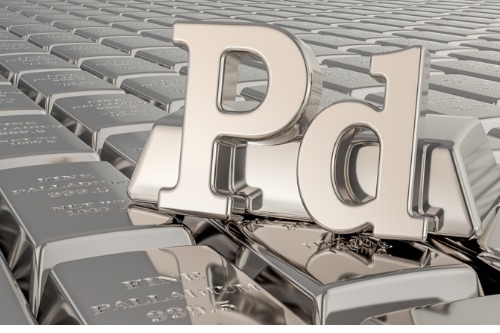The precious metal enjoys a bright outlook even amid auto industry headwinds

Gold has seen a stellar run so far this year, breaching the US$1,400 per ounce level as investors’ search for safety and forecasts of Federal Reserve rate cuts provide valuable tailwinds. But while the haven commodity is poised to reach fresh six-year highs, its run still pales to that of another precious metal.
“A key ingredient in the catalytic converters that reduce pollutants in car fumes, palladium in January became the most expensive precious metal for the first time since 2002,” reported The Wall Street Journal. “After a 16% surge over the past month, it now fetches $1,555.20 a troy ounce, a premium of almost US$140 an ounce over gold.”
Palladium’s fortunes has been somewhat tied to gold’s, as it has also benefited from the weakened greenback, as well as appetite for haven assets in preparation for the next downturn. But the palladium rally has been turbo-charged by a global push to clean up the air in cities.
“The metal’s surge has outstripped those of both the S&P 500 index of large-cap U.S. stocks—which closed at a record high Wednesday—and Brent crude by more than 10 percentage points in 2019,” the Journal said.
The demand for the metal is even more remarkable considering how weak car sales have been around the world. New car sales among major US auto makers have declined in the first half of 2019, and are anticipated to fall short of 17 million this year for the first time since 2014. Figures from the China Association of Automobile Manufacturer show similar limpness as the world’s largest vehicle market posted a 16% year-on-year sales slump in May — reportedly its 11th consecutive month of decline.
Joni Teves, a precious-metal strategist at UBS Group, told the Journal that palladium imports into Hong Kong have accelerated in recent months. This is in part due to stricter emissions standards in several Chinese cities and provinces, whose implementation has been fast-tracked from their original effectivity date of July next year.
One risk to the rally is that high palladium prices could compel auto makers to switch to platinum, which is reportedly over US$700 cheaper per ounce, in catalytic converters. But analysts have pointed out that palladium performs better under new extreme-conditions emissions tests.
In a commentary published in January, Shree Kargutkar, a portfolio manager at Sprott Asset Management, noted that such a switching to platinum-based catalytic converters would entail “manufacturing, engineering, and supply-chain costs” that could prove too expensive for auto manufacturers in case a global trade war breaks out and automotive sales weaken further.
The growth of electric vehicles presents one scenario in which palladium demand could drop, as EVs do not require catalytic converters. But according to Sprott Asset Management CEO John Ciampaglia, the advent of hybrid-electric vehicles could also drive palladium demand as they would still require palladium to control emissions.
“The mining company Norilsk Nickel forecasts that combined palladium use in hybrid and plug-in hybrid — or rechargeable — vehicles in 2019 will be nearly triple that of 2016,” Ciampaglia said in a January commentary.
From the supply side, the rally is expected to persist as the metal continues to be in short supply. Figures from the U.S. Geological Survey indicate that 210,000 tons of the metal were mined in 2018, a nearly 7% reduction from the year before. Teves said that demand has exceeded output for years, with no major new mining capacity expected to come online for several years yet.



